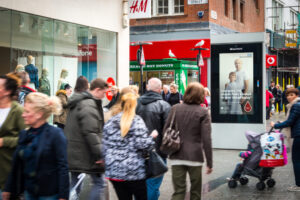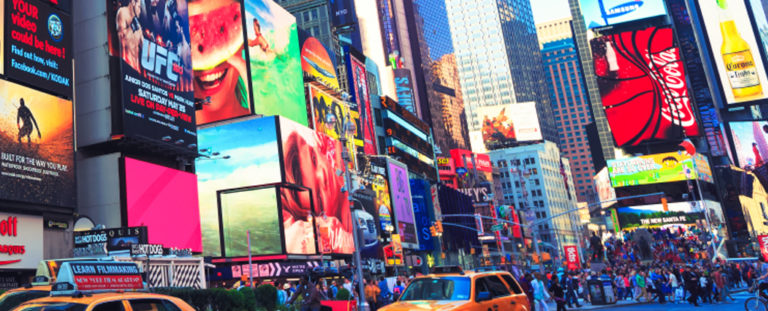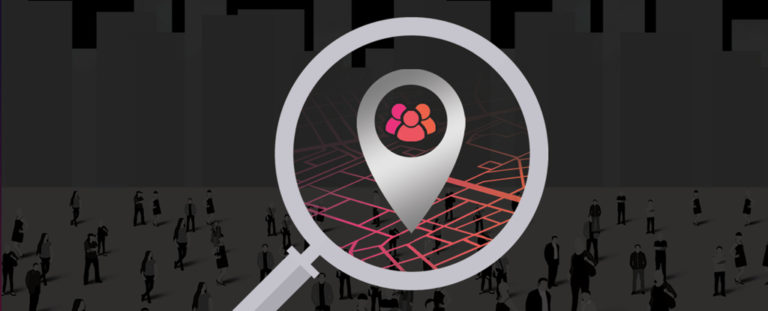Healthcare Companies can stay insured with DOOH
Published: August 24, 2022
Hospitals and healthcare systems were eager to put 2021 behind them and prepare for the future. The outcomes of COVID catalyzed an explosion of online care, which altered the fabric of the American healthcare system. Health organizations stayed on top of this digital boom while educating the public, promoting new products and services through digitalization, and scaling ahead of the competition. As people are easing back outside, healthcare companies can utilize out-of-home (OOH) ads to reach a larger audience in an impactful way.
Healthcare marketing companies saw OOH's potential between 2016-2018; OOH advertising within consumer healthcare marketing increased from 4.5% to 39.5% (a 777% increase). OOH advertising resurged as digital and programmatic capabilities became accessible, simple, and affordable with digital out-of-home (DOOH).
DOOH has revolutionized healthcare marketers' approach to educate and interest consumers as they move throughout their day. In Nielsen's study,1 in 4 observers are highly engaged with OOH ads, and the more dynamic and interactive your ad is, the more consumers are likely to stop and take notice.
DOOH is not limited to the outdoors. Place-based screens can be found in locations such as doctor’s office waiting rooms, pharmacies, and even hospitals. While the patient is waiting for their appointment, kiosks can be set up in waiting rooms and include a QR code that allows the patient to register faster. Or, an interactive display's QR code leads to an app that enables consumers to receive complimentary healthcare services or exclusive content when signing up. These tools can be practical in driving new consumers to medical service locations and maintaining and informing current patients, with 66% of smartphone users taking some action after seeing an OOH advertisement.
Not only does DOOH peak consumers'  interest with interactive ads, but it also offers performance data to effectively measure the impact of a brand’s campaign. In 2019, the British National Health Service started a nationwide digital ad campaign to rally
interest with interactive ads, but it also offers performance data to effectively measure the impact of a brand’s campaign. In 2019, the British National Health Service started a nationwide digital ad campaign to rally
citizens to donate blood. Utilizing first-party data, the campaign targeted key cities around England with creative showing information on the closest donor centers, the walking distance, and appointments available. To normalize and personalize donating blood, they used images of actual blood recipients. Incorporating real-time data into the British National Health Services DOOH campaign approach effectively debunked medical myths and helped spread factual information about blood donations in the public sphere.
Healthcare organizations don't always have to reach consumers, but other medical professionals, leaders, and policymakers. When Dana-Farber Cancer Institute in Boston felt that physicists weren't getting the recognition they deserved, they decided to launch a national campaign to inform the scientific community about the global impact of medical discoveries and cancer research being done at their facility. The institution used digital placements coupled with social media and print advertising to showcase its work. Cross-channel advertising provides healthcare companies access to a broader audience.
Hospitals and healthcare organizations have an immense responsibility to educate consumers, medical professionals, and policymakers while promoting their service and research and keeping up with trends. As misinformation spreads, it is essential for this industry to use digital out-of-home, especially as people have eased their way into public places. So, what are you waiting for? If you're ready to plan and launch your DOOH campaign, our team of DOOH experts is prepared to help at no charge to you! Contact us at concierge@adomni.com.
Written By: Julia Cramer
To get the latest updates on out of home advertising, digital marketing and technology, follow us on:
Or sign up for our newsletter.






